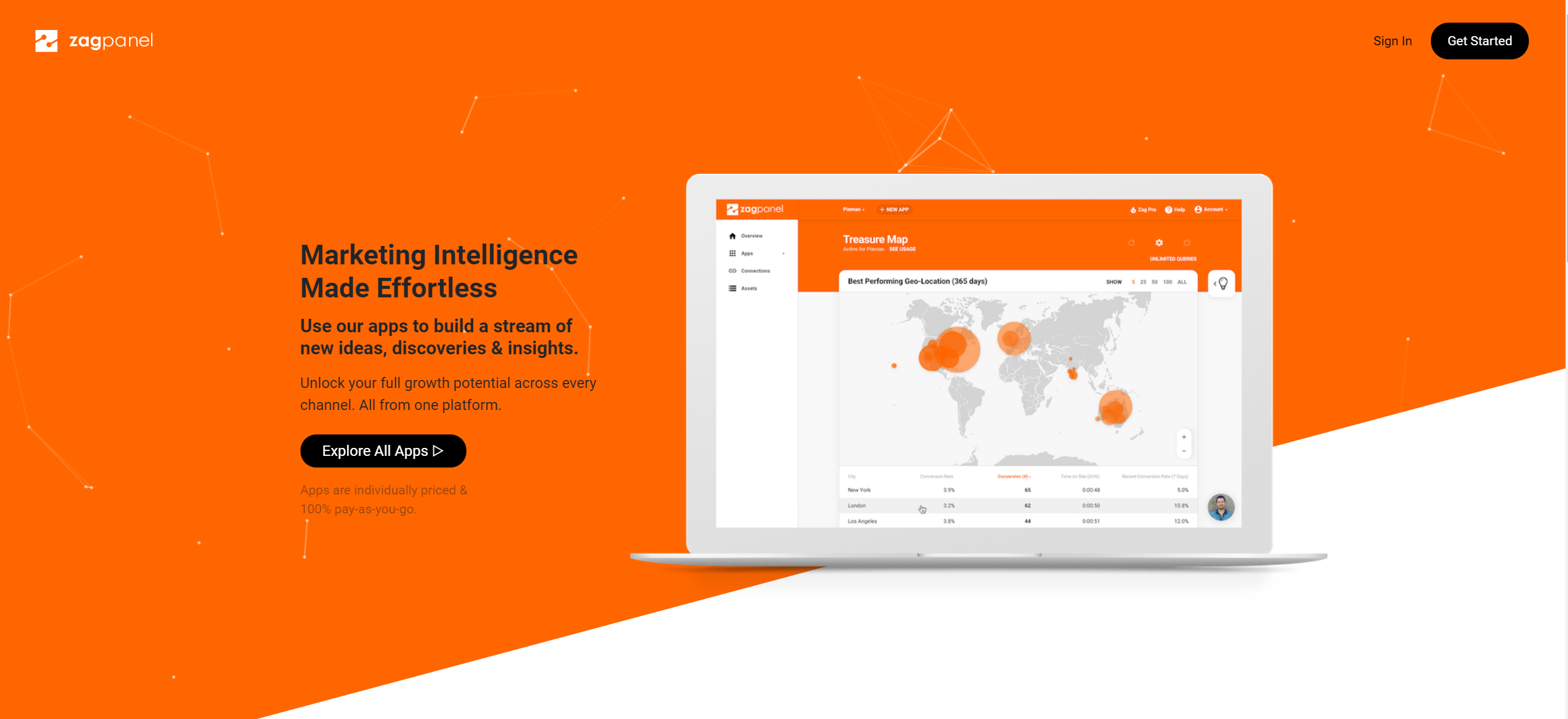Every big company started out as a crappy little side project, a fledgling startup or at the very least – a flawed idea.
In general, it faced the same early stage hardships that every new business endures: crickets on launch day, rollercoaster revenue, growing pains, stalled growth, & people problems.
But somehow, it managed to break out of the usual “failure filters” that tend to catch the majority – and transcend from just a livelihood into an empire.
So… what went right?
Let’s take a look…
—
Meet Mankind’s Greatest Invention
—
It’s not the Fidget Spinner, the Snuggie or the Segway…
And perhaps I’ll let someone a little more credible when it comes to great inventions introduce the concept:
Now, the world’s most iconic genius might have simply been having fun when he singled out Compound Interest as our species’ primary achievement . But even so, this is objectively quite accurate – especially when we apply the concept of compounding effects outside of finance.
Consider the impact of incremental improvements to a process like agriculture (arguably our first step towards a technological society), and how important it was for a group of people to perpetually try new things – establishing best-practices and effective methods through endless trial & error, collaboration and rudimentary forms of documentation… you begin to see that in fact, ‘compound interest’ may well have been the most essential invention of our species, after all.
The ability to test, adapt, improve and then set the new baseline slightly higher each time … this is the “magic” of compound interest.
Much like how trading a paperclip for something incrementally better will get you a 2-storey house in just 14 trades(!), these compounding effects can also help to explain how we’ve been able to trade our horses for Teslas in little more than 100 years.
And this same mechanism is something you can use in your business, in your life – and if you’re bold enough, with even with a paperclip 😉
Which brings us to…
—
The Magic Formula?
Well, it Ain’t Magic. But it Does Start With an “M”…
—
Unlike bullshit theories (like the Law of Attraction) – this formula is logical, accessible, & measurable.
And yet, it’s so rarely mobilized as a business strategy.
It’s called Marginal Gains. At a high level, the concept involves identifying habits & processes that can be slightly adjusted, and where those small “nudges” will accumulate into substantial positive gains – for little or no cost in effort or resources.
For example, let’s say you’re 20lbs overweight. The conventional approach to solve the problem might be to join your local weekly “bootcamp” class.
While this might seem effective, usually marathon gym sessions & huge lifestyle shifts are short-lived, and only last as long as your motivation (generally a month or two). And for most, the weight loss is either minimal or at best, short-lived due to the typical “yo-yo” relapse cycle.
That’s the conventional approach. And typically, you’ll still be 20+ lbs overweight the same time next year.
In contrast, Marginal Gains is all about nearly imperceptible changes that accumulate over time – for minimal cost & effort. So in this case, to lose 20lbs, what you’d do is establish a baseline for your current daily habits, and slightly optimize each of them – but not too drastically. Just a little.
So instead of adding 2 sugars to your 3 coffees/day, you’d use a sugar substitute. And instead of just doing 5 minutes of walking a day, you’d add an additional 5-minute loop to your daily routine.
And that’s it.
Now – compared to the boot camp approach, this seems pretty weaksauce – or like you’re ‘half-assing’ it. But in actual fact, by removing 2 sugars from 3 coffees/day, and adding an additional 5 minutes of walking each day, you’re actually creating a calorie deficit (below the current baseline) of something like 300 less calories every day.
If you were in a holding pattern at 20lbs overweight, then just by doing those two little things (sugarless coffees, extra 5 min walk), you’d probably drop most of that weight within 3-4 months after starting your Marginal Gains strategy. And after 12 months, you’d probably be in peak shape.
One of the more popular examples of Marginal Gains was how the UK cycling team applied the model by simply making 1% performance increases to every modifiable element of the cycling process. Their coach, Sir David Brailsford, explained the approach as follows:
“It struck me that we should think small, not big, and adopt a philosophy of continuous improvement through the aggregation of marginal gains. Forget about perfection; focus on progression, and compound the improvements.”
The result? They broke a 76-year losing streak, and then went on to win 7 olympic gold medals in 2008. (You can read the full story & interview on HBR)
Pretty damn impressive. And yet… it’s just basic math. Or if you like, Magic without the mystery.
It’s the same “magic” behind the $10,000 portfolio that gradually accumulates into $500,000 over someone’s lifetime – just by sitting in some broad-market equity indexes, untouched.
This is how snowballs become an avalanche; how shitty little ideas can become empires.
Anyway. Let’s talk about how to tangibly use the “greatest invention” to reinvent your own results…
—
So You Wanna 10X Your Growth?
(Or 100X Your Revenue?)
Start Thinking Small…
—
Where marginal gains really get exciting is in the context of digital marketing… because the results of accumulation are easily measured, and the early indicators are visible almost immediately.
And in this case, I think the numbers basically speak for themselves.
Here’s what happens to a business when it just slightly improves its performance across a few critical sections of the customer journey – and this is only factoring 3 areas: conversion rate, average transaction size, & average # of transactions…
| Marginal Gain | Conversion Rate | Avg Transaction Size | Avg Transaction Amt | Customers per 100K visitors | Revenue per 100K visitors | % Rev Increase |
|---|---|---|---|---|---|---|
| 0% (Baseline) | 1.5% | $100 | 1.1 | 1500 | $165,000 | Baseline |
| 2% | 1.53% | $102 | 1.12 | 1530 | $174,787 | 5.9% |
| 5% | 1.58% | $105 | 1.15 | 1580 | $190,785 | 15.6% |
| 10% | 1.65% | $110 | 1.21 | 1650 | $219,615 | 33.1% |
| 15% | 1.73% | $115 | 1.27 | 1730 | $252,667 | 53.1% |
| 20% | 1.8% | $120 | 1.32 | 1800 | $285,120 | 72.8% |
That’s… pretty astounding. And keep in mind that it’s not difficult to raise the performance of a marketing element by 20%. That’s completely reasonable… almost a bit conservative.
Imagine someone asking you to write a headline that’s ‘20% more compelling’. You could probably just change the font size and call it a day. Or similarly, adding a simple upsell for an existing product into the primary funnel can immediately push the average transaction size up by 20%. The point is – this is well within the range of realism.
But as you probably gathered from the example above, where marginal gains really start to multiply is when they’re applied in concert: The slight bump in conversion rate drives in slightly more customers, who then buy slightly more per order, and who also place additional orders slightly more often… all of this accumulates into substantial upside that is anything but slight.
Undoubtedly, the extra-smart cookies reading this have realized that my chart is missing something: scale.
More specifically – an increase in your marketing budget commensurate to the newfound performance from marginal gains. In plain English, now that your strategic nudging has bumped your effective earnings-per-click by 72%, the smart move at this point is to turn up the “traffic dial” by a similar amount, establishing a new (much larger) baseline of customer inflow.
So not only are you growing revenues by 70% – the newfound, increased revenues can be used to further accelerate customer acquisition… creating an ever-increasing growth “feedback loop”. By the way, this is the part where a pipsqueak business diverges onto a new trajectory… towards becoming an empire.
Now – obviously, the deployment of marginal gains assumes that there’s already an underlying business in play, and that you’ve got the fundamentals figured out (ie. you know your niche, you’re selling stuff they want, your site isn’t dogshit, etc.)
And hopefully it also goes without saying that marketing isn’t linear. It’s a game of averages and adaptation. But on the whole, by even loosely applying the Marginal Gains strategy consistently across your critical performance drivers & touchpoints, you’ll already be light years ahead of your competitors, and the impact of your steady “nudges” will become enormous.
Not because it’s magic, or because you’re special, or because you manifested some sort of metaphysical bullshit with happy thoughts… but rather because business is ultimately numbers. And numbers respond to math.
And that’s all this is.
Finally:
Here’s How to Actually Do This, in Real Life

—
1. Start by Optimizing The Things You Know
Whatever your business model is, you probably have some type of customer lifecycle that resembles the following:
Acquire –> Engage –> Convert –> Retain
It obviously varies, and certain models will have some additional steps in the mix, but every business can be reduced to a top-level customer journey that looks very similar, if not identical, to the above.
And if you’re like most entrepreneurs, typically most of the focus gets placed on the “Acquire” category, with “Convert” & “Engage” as distant contenders for 2nd place… and practically zero focus is placed on “Retain”.
(Fun fact: In my experience, the larger the company, the more inverted that focus sequence becomes – established companies & world-class teams focus almost entirely on retention strategy).
But anyway, the best way to start the Marginal Gains process is by segmenting all of your business operations into each of those core stages (Acquire, Engage, Convert, Retain – or whatever lifecycle variant best fits your business), using your favorite spreadsheet app. All of your processes involved in getting traffic or reaching your target audience in some way goes under the “Acquire” column. Everything that happens to users “post-click”, but “pre-transaction”, goes into the Engage category… and so on.
Once you have your spreadsheet drafted up, all you do is go through each column, and ask yourself the following question for each item:
“What minor adjustments can I make to __________ that would slightly increase performance?”
Add these minor adjustments below each item, just to keep it organized. When you’re done, you’re going to have a pretty substantial to-do list, so ideally – just highlight what you feel is going to be the best adjustment for each item under your respective columns, and copy that priority list over to a new spreadsheet or document.
Congratulations! You probably just created the most valuable asset for your business to date, in less than 20 minutes. Because by simply going through that list and doing those things over the next few days, you’ll have kickstarted the Marginal Gains trajectory… which, as you’ve seen, can have some pretty staggering implications.
2. Next, Discover The Things You Don’t Know
Sometimes the best insights are the ones you aren’t looking for…
But – how the hell do you find those?
Well, at the end of this post I talk about something that does exactly this – but otherwise, here are some top-level starting points for uncovering newfound performance drivers:
- Persistent user complaints, feedback, etc. Since customer support is usually the first thing you offload as you grow, it’s usually overlooked when it comes to mining for insights & growth hacks. I highly suggest doing a weekly review of your support tickets to look for emerging patterns of problem areas, feature requests, comparisons to competitors, and so on. This is a goldmine – especially when you find stuff that directly overlaps with your lifecycle (Acquire, Engage, Convert, Retain).
- Competitive intelligence. While there’s a plethora of competitive research tools on the market, the most effective strategy is to create a dedicated email inbox that you use to enter the funnel for each of your core competitors. Join their newsletters, dig into their sites/services, and buy their stuff. Every week, login to that email account and dig through all of your welcome series, triggered mailers, & direct outreach to see if there’s any gaps in your own messaging, engagement, conversion strategy, your approach to retention, lifting the average transaction volume… etc. You’ll be swimming in a sea of new ideas.
- Adapt stuff from totally different industries. While competitive intel & user feedback is a great way to expand your opportunities through convergence, it’s when you start venturing outside of the “playing field” that you often find your most promising discoveries. Most industries are filled with competitors who basically just hone in on the same overall model, and then race to the bottom to take marketshare from the same finite pool of customers. This is why divergent, “breakout” models can disrupt an entire industry overnight… even though they’re really just adapting some totally normalized model in other sectors. Do this by simply going about your life – but paying more attention to the underlying business models & funnel strategies of the industries where you are the consumer. Your million-dollar moment could be as simple as “copy-pasting” the totally obvious model from the business selling your favorite hobby products, and adapting it to a completely unrelated sector.
In general, just be mindful of the fact that ideas for marginal improvements can come from anywhere. Get in the habit of asking yourself: “Hmm… is this something we can adapt for MyCo, Inc?”
It could turn out to be a profitable habit.
3. Identify the Biggest Drivers – Then Systemize Their Perpetual Improvement
After implementing the first few rounds of “marginal gains” actions – take steps to ensure that you can accurately track the outcome of those actions.
Attribution is a whole blog-post of its own, but this is an area you’ll want to stay on top of.
Why? Because not everything you improve is going to drive meaningful performance. And it’s pretty important to figure that out from the start.
But, it ain’t rocket surgery – and some initial effort on the setup side for tracking this stuff is going to be paying for itself 1,000X over – so just bite the bullet and do it. Post questions on forums, hire freelancers, use special software – whatever. Just don’t slack off on this part, or else the whole exercise will be squandered.
Anyway – with enough sample size (comparing your users, conversions, etc before & after your improvements), it will become obvious which of your “dials” that you’re adjusting actually move the needle. Once you have a clear picture of your biggest drivers, then the next step is to create a system for perpetually optimizing them. This is where the results truly start compounding.
Here’s some ideas for building the ultimate growth-machine:
- Incremental KPI Targets: For key people in your marketing team (including outside specialists & agencies), set specific KPI targets for the main drivers, where if that target is reached in a given calendar month, the person overseeing that area gets a bonus. If possible, gradually raise the targets each quarter as the baseline inches upward. This directly aligns your key staff with the most important objectives, by default.
- Theme Days: For yourself (or for small teams), I strongly suggest trying theme days. How it works is simple: Each day of the week represents a different focus – at least in terms of the main drivers in your Marginal Gains campaign. On Mondays, dedicate X hours to improving Acquisition items. On Tuesdays, dedicate X hours to improving Engagement items… and so on. You don’t have to fill all 7 days, and it doesn’t need to consume the whole day. The point is, theme days are a way to ensure that at very least, you’re actively “compounding the interest” of this strategy, every week. Because that’s what will eventually drive exponential growth.
- Make this entire process someone’s job. Whether you label them the CMO, CRO, or whatever – if you have the resources, this is easily the highest ROI you’ll ever get out of a payroll remittance. If “Marginal Gains” was effectively the job description for a talented manager in your company, then your growth can truly become an automated process.
We’re getting a bit into the weeds of overall management strategy & business-building here, but for good reason – just like marginal gains, it’s usually the fundamentals that end up catapulting ideas into empires.
(It ain’t “one weird trick”…)
—
What if the “Magic Formula” Had its Own Platform?
—
Hopefully, I’ve been able to spur some ideas, and to inspire you to at least try using Marginal Gains in your own business.
But my aspirations go a bit further than that, actually.
See, for the past 2 years at this point, my team & I have been quietly building a platform that takes a totally new approach to marketing intelligence.
We’ve designed it for marketers who understand the power of marginal gains – and that perpetual smart nudges will far outperform “growth hacks” or one-off tactics, regardless of the time horizon.
Here’s what the platform does, in a nutshell:
- It pinpoints immediate growth opportunities that likely aren’t on your radar – across every major channel, every day.
- It perpetually finds new prospects for you & your team to chase down, on autopilot.
Example: New optimization targets, new content strategies, new ad placements, new competitor channels to piggyback, new in-market conversations to join… You’ll never run out of ideas. - In general – it uses your data & your targets to perpetually find new ways of dialing up your performance, at every stage of the customer lifecycle.
The existing intel tools out there are basically an “answer machine”. They’re great at digging into data, intel & insights that you already know about. But the quality of the “answers” directly correlates with the potency of your questions.
The big difference here is that with our platform – insights are automatically surfaced. Which leads to a lot of surprises & actual discoveries, rather than just an expansion of a known query.
Obviously, this wasn’t a weekend project…
And it’s far from its final form. But regardless – to say that I’m excited would be a total understatement.
(And no, it’s not what you see on BigPixure.com – that’s an alpha spinoff that’s currently just being licensed by other MarTech platforms)
I basically have to leave you hanging for the moment… but what I can say is that for my old time readers & customers from yesteryear – I’ll be doing one last little “launch” for anyone that wants to check out what we’re working on, kick the tires a little, or even actively participate in its development as it progresses over the next few months into Beta.
So, if you’re interested in seeing how the platform actually functions, and exactly what it does – stay tuned, and keep an eye on your inbox.
Rusty old Rempel is gonna run one last old-fashioned shindig 😉
Talk soon guys
~ Chris






Love it, Chris!
I’ve mentioned before that you are one of only maybe 3 or 4 people I started listening to a long time ago, and who has survived multiple “purges” over the years. This post is another reason why.
(Simple stuff + Brilliant stuff) – (“flavor of the day” crap) = timeless.
Perry Marshall is another person on my short list, and in fact I’m so invested in that world that I moderate his forum. Perry’s brilliant and a lot like you. He’s huge on 80/20. Another one of his famous sayings? “Tiny hinges swing big doors…”
He’s a big fan of compounding successes exactly like you discussed here. So critical. So much low-hanging fruit falling to the ground and rotting.
I guess what I’m saying is that I don’t think it’s coincidence that two of the smartest guys out there are in complete alignment on something like this!
Very eagerly awaiting more…
Scott
Thanks so much Scott – and totally agree re: Perry.
I regret not switching over to paid channels earlier on – something Perry had always advocated .